Globe artichokes not only make a pretty addition to vegetable gardens, but they are a delicious delicacy. Although classed as a hardy plant suitable to be grown in several climates, this edible thistle can be affected by less-than-ideal growing conditions that can result in small artichokes. So if your artichokes are small, read on to find out why and how to fix the problem.
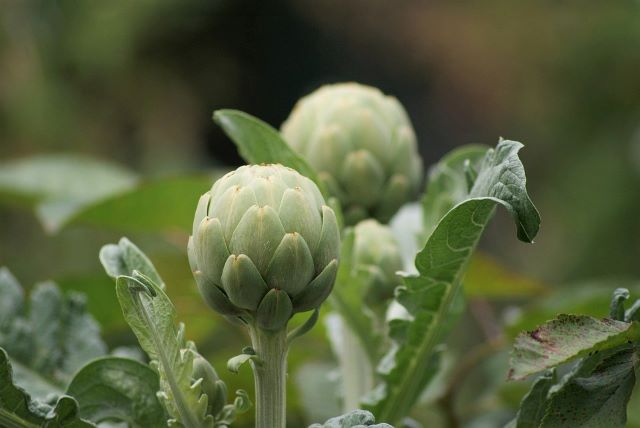
Table of Contents
Firstly, How Big Should a Globe Artichoke Be?
The variety of globe artichokes you grow will determine the globe artichoke bud size. Usually, globe artichoke buds are harvested between 2.5-6 inches (7-15 cm) in diameter with an average of 4-5 inches (10-12cm). So if you think your artichoke is small, just make sure it is not because of the variety you are growing.
Another natural reason for smaller artichokes is the frequency of harvesting. Regular harvesting will encourage the artichoke plant to produce side shots and buds which will be smaller but no less tasty.
Why Are My Globe Artichokes So Small?
Common causes of small artichokes include a variety of pests and diseases, along with inadequate soil and climate conditions. Pests and diseases include artichoke aphids, flea beetles, artichoke plume moths, artichoke curly dwarf virus, and bacterial crown rot.
Below we explore each problem and provide you with natural, organic solutions so you can grow a healthy harvest of big artichokes (Cynara scolymus).
Common Causes of Small Artichokes and How To Fix Them
1. Artichoke Aphids
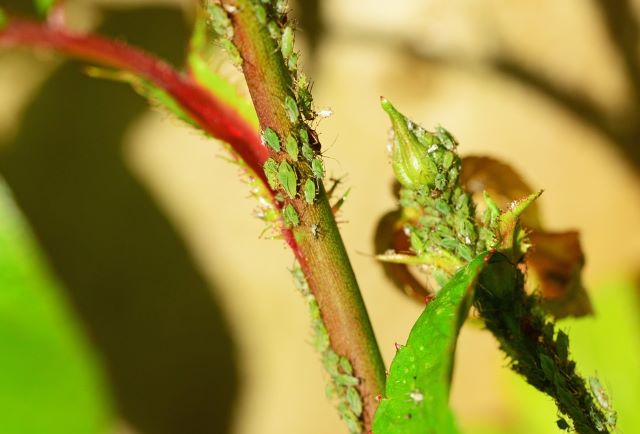
There are several signs to look out for if you think that aphids are causing your globe artichokes to produce small buds. Most notably, if the leaves of your artichoke plants are beginning to curl and turn yellow you may have an aphid infestation.
Artichoke aphids are tiny pale insects that like to congregate on the stem of your plant or the underside of your plant’s leaves. Aphids can appear pale, almost translucent, green, or black.
In addition to small globe artichoke buds and yellowing leaves, other signs that you have artichoke aphids include:
- A sticky substance called honeydew is present on the stem of your plant. Honeydew is usually accompanied by ants and ladybirds.
- Deformed artichoke heads.
- Mold on the buds.
- Drooping.
The easiest way to get rid of artichoke aphids is to spray the infected leaves with cold water from your garden hose. If there are not too many little insects, you can remove them by wiping the affected areas with a wet paper towel.
Another way to remove aphids from your plants is by spraying them with a mixture of dish soap and water. And neem oil and canola oil are both effective at preventing aphid infestations.
2. Flea Beetles
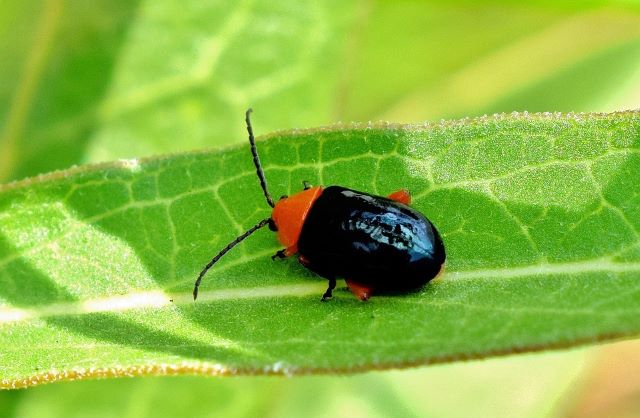
These small black, often shiny beetles are a common vegetable garden pest, that like to munch on your striking globe artichoke plants. Flea beetles leave their tell-tale bites, resembling small holes or pits, throughout the leaves of the artichokes.
If your globe artichokes have become the host to flea beetles you may notice that their growth is abnormal. Your artichoke plants will appear much smaller. If the small jumping beetles have inflicted too much damage, your small artichoke plants will start to die.
These pests lay their eggs on the underside of your artichoke plant’s leaves, or in the stem. Once hatched, the maggots fall to the ground, and bury themselves into the soil around your plants. These maggots will then feed on the roots of your artichoke seedlings. Globe artichoke seedlings are particularly vulnerable to adult flea beetles.
To protect your plants from flea beetles, remove all debris and weeds from your garden. In addition, floating row covers can be used to protect your plants from any jumping beetles that may be hiding.
If your garden does have a flea beetle problem, you can use neem oil on the affected plants. Planting decoy plants such as chamomile and anise that produce pollen or nectar to divert the beetle’s attention will also save your artichokes.
3. Artichoke Plume Moth
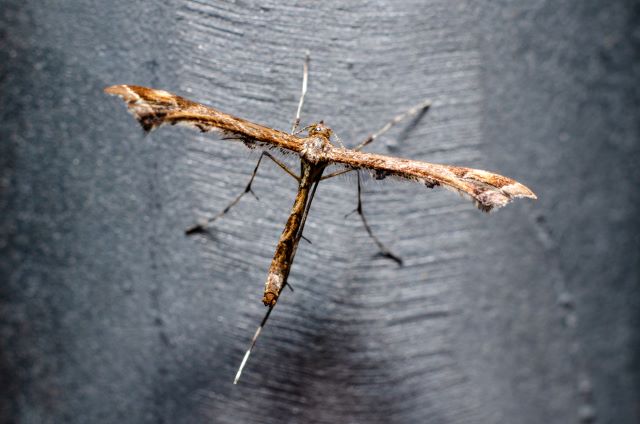
The artichoke plume moth is one of the most common, and destructive pests your artichoke plants can be affected by. This pest is usually found in zones 7-11 in North America, where artichokes are grown as perennials. As well as in Mexico and New Zealand.
The adult moth, which varies in color but usually appears to be brownish buff, lay their eggs on the underside of the leaves of the artichoke. The larvae first feed on the leaves of the plant. Later, they tunnel into the leaf stalk, slowly making their way toward the bud.
A plume moth infestation can cause your buds to be deformed and small. You will notice your artichoke plant’s stalks will begin to wilt and turn black. You may notice black excrement inside the holes made by the moths on the plant stalk. Eventually, the plume moths will cause the plant to die.
There are several things you can do to prevent this common artichoke pest from invading your artichoke plants. Firstly, pheromone traps or these yellow sticky traps have proven to be successful. Secondly, neem oil has been found to reduce the chances of plume moth infestation.
4. Artichoke Curly Dwarf Virus
One reason your globe artichoke’s growth is being stunted could be due to the artichoke curly dwarf virus. This virus drastically stunts the growth of artichokes in addition to causing the artichoke buds to be deformed. The curly dwarf virus will also cause your artichoke plant leaves to curl.
Plants that have been infected with the artichoke curly dwarf virus will present with dark, necrotic spots on distorted leaves. This harmful virus is believed to be spread by common garden pests such as aphids and leafhoppers.
Currently, we know very little about the actual virus. However, we do know that once your artichoke is showing symptoms of the disease, it can’t be saved. The disease can spread rapidly to the rest of your artichoke plants. There is little else to do but pull up the artichoke plant and destroy it to prevent the virus from spreading.
The virus is commonly found in the milk thistle weed, so it’s best to remove any that have sprung up in your garden. If you have had a recent infestation of aphids on any other plants in your vegetable garden, cover your artichoke plants. Floating row covers are great for protecting your plants from insects.
5. Artichoke Bacterial Crown Rot
Bacterial crown rot presents during hot weather. The first sign is wilting artichoke plant leaves. In addition, your artichoke plant will produce small buds. You may notice that your plant has developed dark spots on the stem, further indicating your artichokes have sadly been infected with the disease.
The virus gets its name due to the damage it causes to the artichoke’s crown. Over time the crown will soften, and rot. Eventually, bacterial crown rot will cause the plant to collapse.
The way to prevent bacterial crown rot is by sterilizing your garden tools with isopropyl alcohol before using them on your artichoke plants.
6. Soil Conditions Affect Artichoke Growth
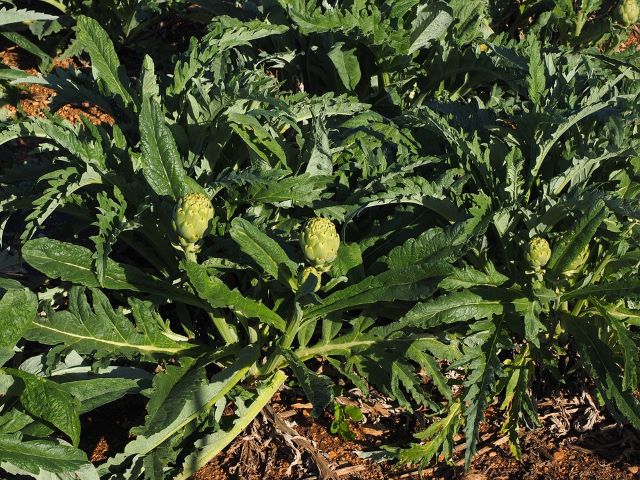
Globe artichokes are particular when it comes to soil conditions. They will thrive when planted in nutrient-rich, well-drained soil. Artichokes prefer sandy loam soil and will not grow in clay soil.
Artichokes need the right amount of water; too much, or too little can affect their growth. If your soil is too dry, the artichoke’s growth could be stunted, resulting in small heads. If your soil is too wet, it can cause your artichoke roots to rot, and open up your plants to a range of fungi.
A good rule of thumb is to water your artichoke plants when the soil is dry 1 inch below the surface. Depending on your climate and the season, this might be 2-3 times a week during warmer weather.
Artichokes should be planted 4-6 feet apart, in soil that has been enriched with good compost. To prepare your soil for planting dig the row at least eight inches deep, and mix in at least 5 inches of compost.
To check if your soil is full of nutrients, simply make a fist around some in the palm of your hand. If the soil does not fall apart or clump together, your soil is ready for your artichoke seedlings or seeds.
The pH level of your soil is important to maintaining healthy artichoke plants. Artichokes will produce larger buds when the pH level is between 6.5 and 7 – you can check your soil pH with a monitor here.
Artichoke plants also benefit from fertilizer throughout the growing period. An all-purpose edible garden organic fertilizer like this one is ideal for keeping the soil fertile and the artichoke plant healthy and productive.
7. Temperature Affects Artichoke Size
Despite being classed as a hardy plant that can technically be grown in U.S zones 3 through 11, artichoke plants have a climate preference. They thrive in Mediterranean-type climates, where temperatures do not dip lower than 50 °F (10 °C) during winter, and summer temperatures average around 80 °F (27°C).
Artichokes grown in less-than-ideal climates will result in stunted, small artichokes. In addition to being planted towards the end of winter or at the very beginning of spring, artichokes require full sun to produce well-formed, large, healthy artichokes.
Further Reading:
